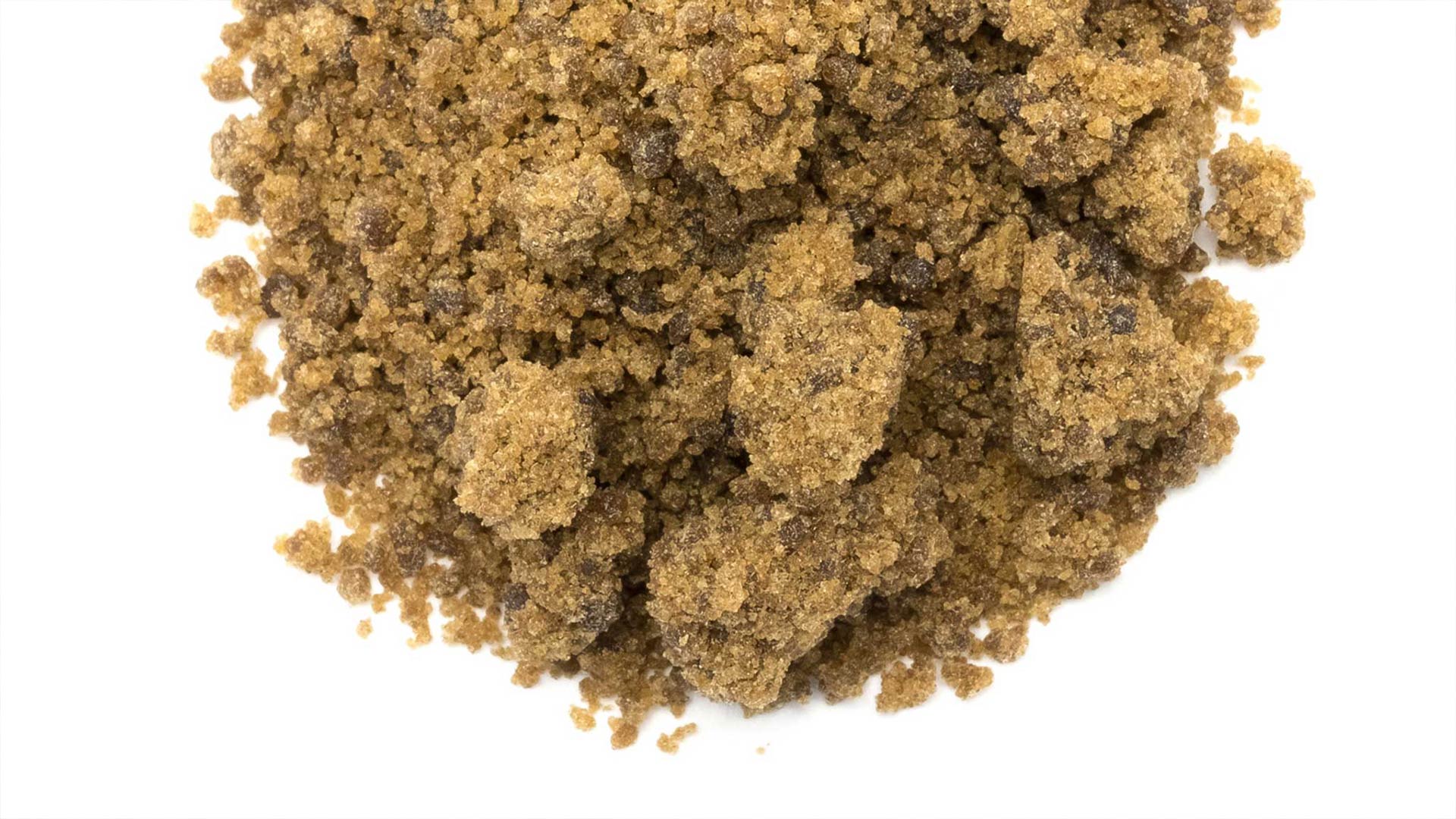
Hash and kief are two types of extracts from the cannabis plant that can be added to joints and bowls or used to make cannabis concentrates. However, while these two products are similar and the terms are often used interchangeably, they are not, in fact, the same thing.
Cannabis consumers and entrepreneurs alike who are interested in making their own solventless cannabis concentrates should understand the differences between the two in order to make the best possible extracts.

The Principal Distinction Between Hash and Kief
The primary distinction between hash and kief is that hash is defined as kief that has been stripped of its impurities, whereas kief refers to the loose, unprocessed cannabis trichomes and leaf detritus. Extractors can cause more confusion by referring to dry sift as “kief” and bubble hash as “hash” only.

Kief
The fine powder obtained when you separate the trichomes or resin glands from cannabis buds, typically through agitation, is considered “kief”.
The word “kief” comes from Moroccan Arabic كيف kīf, meaning “joy, pleasure.” Kief is usually greenish-brown in color because it still contains some of the cannabis plant material in addition to the resin glands.
Many flower grinders contain an additional layer of collecting at the bottom that is called a “kief catcher” and is kept apart from the main chamber of the grinder by a mesh screen.Using this multi-chamber herb grinder, many cannabis lovers gather kief from cannabis flowers and just eat it plain.
Kief can be poured to a joint, sprinkled over a bowl, shaped into balls called “charas,” or adhered to the exterior of a joint with saliva or water. For commercial use, however, refining kief into dry sift hash yields a cleaner high and better flavor.

How Kief Becomes Dry Sift Hash
Kief can be purified into dry sift or dry sift hash by separating the plant material in the mixture from the trichome resin glands. This can be achieved through a variety of means but is most commonly done by sifting the kief through several layers of food-grade stainless steel mesh screens. These screens are extremely fine—for a high-quality dry sift, you’re looking at 80, 130, and 180-micron mesh screens.
After refining the kief through sifting, the resulting dry sift should be tan or almost white in color and contain around 50-60% THC (depending on your starting material). Food-grade, clean, dry sift can be used in edibles, topicals, joints, pressed into cakes, or used to make specialty products like “moon rocks” (cannabis buds covered in hash oil then rolled in dry sift).
Bubble Hash vs. Kief
If you have access to fresh-frozen flower, hash can also be made using ice water,but in this case it’s referred to as “ice water hash” or “bubble hash.” Like dry sift hash, there are several differences between kief and ice water hash, including the starting material, the resources required to make it, and the quality of the final extract all of which we will explore below.

Starting Material for Dry Sift vs. Ice Water Hash
To make dry sift, you must start with dried, cured cannabis. The sifting technique won’t detach the trichome heads from fresh cannabis flowers, frozen or otherwise. In contrast, ice water hash is made with fresh frozen cannabis, which has a different cannabinoid and terpene profile compared to the cured buds.
The atmosphere needed for the two techniques is also different. Kief crystals for dry sift need to be separated from the resin glands of the plant material in a dry place (preferably a place with cold air, like a walk-in freezer). In contrast, for ice water hash, the trichomes are separated from the cannabis flower inside the water itself and collected with bubble hash bags.

Required Equipment
Herb grinders with a kief collector at the bottom allow anyone to make kief at home on a budget. All you need is a set of mesh screens—which are typically extremely inexpensive—to purify this into dry sift. Depending on density, the GreenBroz Alchemist 420 can sift 8 to 10 pounds of trim at a time for a commercial setup.
On the other hand, making ice water hash calls for more specialized equipment, unless you’re utilizing the do-it-yourself bucket approach, which we don’t advise. Although high-quality commercial ice water hash washing equipment can be expensive, it guarantees a superior result and offers the possibility of yields comparable to those in a commercial setting.
Producing High-Quality Solventless Extracts Is Worth the Effort
High-quality dry sift that’s used in edibles (after decarboxylation), topicals, infused joints, and moon rocks often produces good financial returns as a clean, solventless extract. However, if you want to make a top-shelf cannabis concentrate, ice water hash will give you the most premium result.
In both cases, it’s important to ensure the highest-quality starting material and use high-quality food-grade equipment. Then, you can start making your own solventless extracts for home or commercial use and enjoy the rewards.
Buy Hash vs. Kief online.
Kief, the most popular and common strain of cannabis, is a high-quality weed that can be used for both personal and commercial purposes. Kief is a type of cannabis that comes from the dried flower buds of the hemp plant. Kief is extracted from the plant by crushing it and then grinding it into a fine powder.
Exotic Cannabis Line is a reputable online dispensary that cares about our customers. To buy Kief with us, check out some available Hash vs. Kief in stock.
